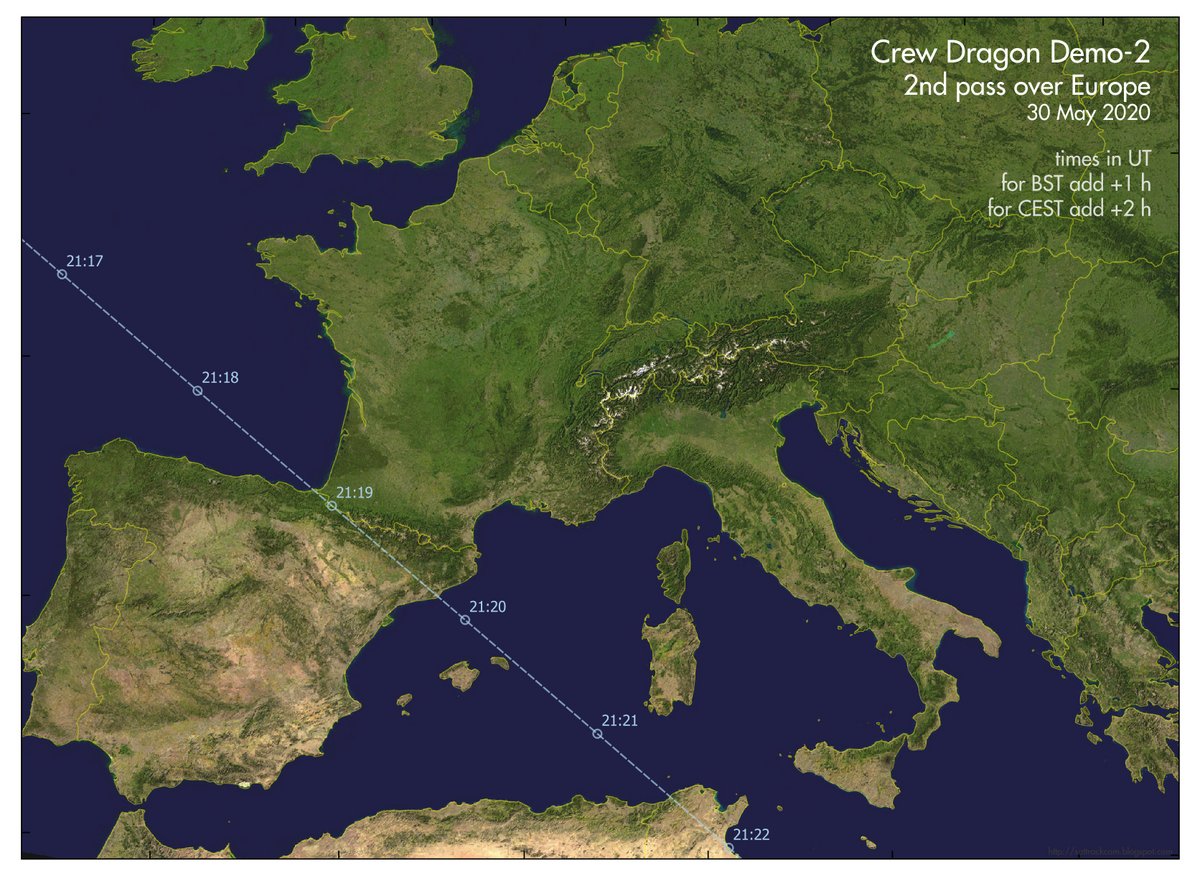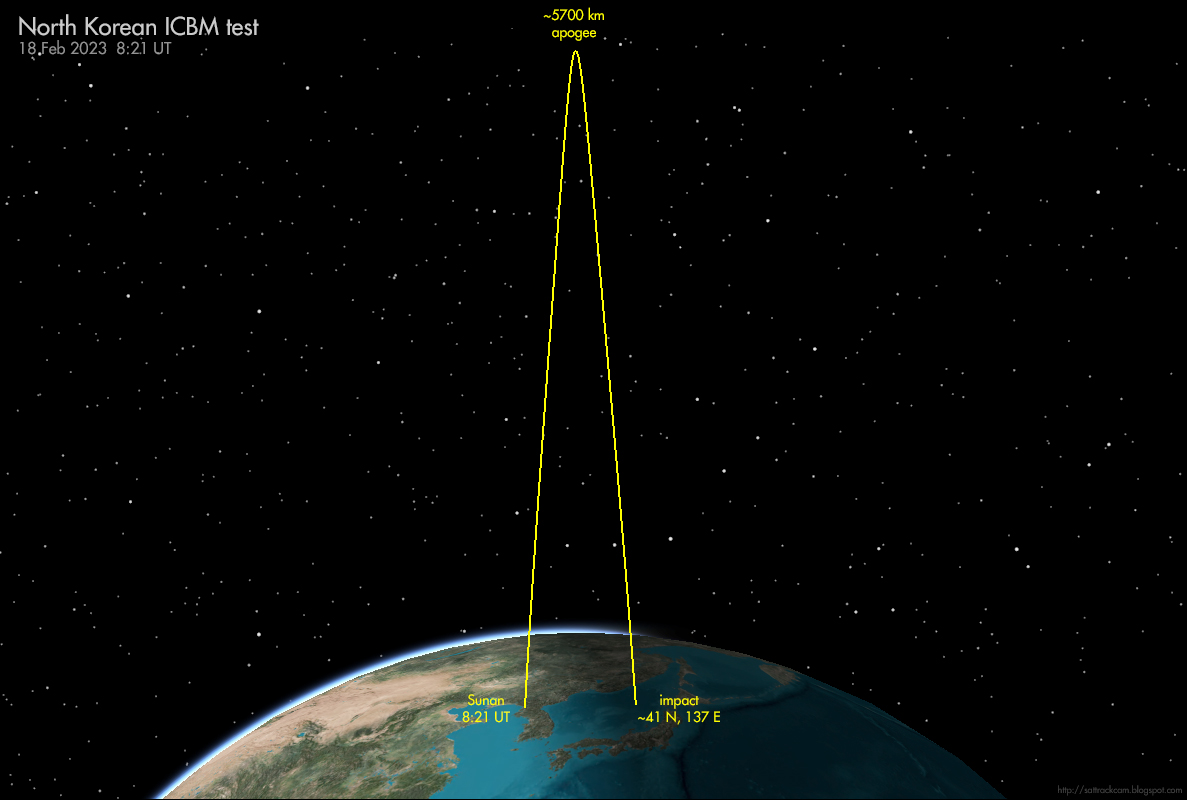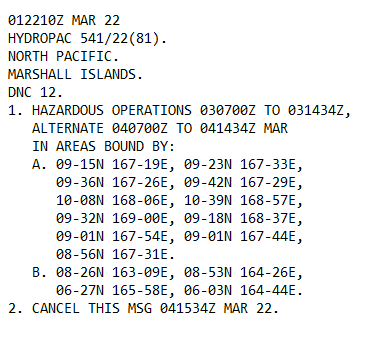1/10
(English version of the thread I earlier posted in Dutch).
So, another launch attempt of the @SpaceX #CrewDragon tonight 30 May at 19:22 UT (21:22 CEST). If the weather doesn't interfere, because it is again not looking very positive: patrick.af.mil/About-Us/Weath…


(English version of the thread I earlier posted in Dutch).
So, another launch attempt of the @SpaceX #CrewDragon tonight 30 May at 19:22 UT (21:22 CEST). If the weather doesn't interfere, because it is again not looking very positive: patrick.af.mil/About-Us/Weath…



2/10
For NW Europe, the earlier launch time compared to 27 May means we will NOT see it pass some23 minutes after launch.
Depending on your location the sun is either still *up*, or only just set, as is visible in this map I made (times in UT, as +1h for BST, +2h for CEST):
For NW Europe, the earlier launch time compared to 27 May means we will NOT see it pass some23 minutes after launch.
Depending on your location the sun is either still *up*, or only just set, as is visible in this map I made (times in UT, as +1h for BST, +2h for CEST):

3/10
East and Southeast Europe (basically, locations east of 13 degree E longitude) does have a good, visible #CrewDragon/Falcon pass 23 minutes after launch.
West Europe has a sighting opportunity at the SECOND pass near 23:18 CEST, but for NW Euroep verly low above the horizon
East and Southeast Europe (basically, locations east of 13 degree E longitude) does have a good, visible #CrewDragon/Falcon pass 23 minutes after launch.
West Europe has a sighting opportunity at the SECOND pass near 23:18 CEST, but for NW Euroep verly low above the horizon
4/10
In this and the next tweets, first some sky charts for localities in East and Southeast Europe for the first #CrewDragon pass 23-25 minutes after launch, about 21:45 CEST.
Then sky charts for localities in West Europe for the second pass at about 23:18 CEST.



In this and the next tweets, first some sky charts for localities in East and Southeast Europe for the first #CrewDragon pass 23-25 minutes after launch, about 21:45 CEST.
Then sky charts for localities in West Europe for the second pass at about 23:18 CEST.




6/10
Charts for localities in West Europe that can see the second pass near 23:18 CEST, but for NW Europe often very low above the horizon (the further south in Europe, the better). Note: the ISS will pass slightly higher in the sky a few minutes earlier!



Charts for localities in West Europe that can see the second pass near 23:18 CEST, but for NW Europe often very low above the horizon (the further south in Europe, the better). Note: the ISS will pass slightly higher in the sky a few minutes earlier!




8/10
Note that the heavens-above.com website can provide you with custom predictions for your location. However, for the 2nd pass near 23:18 UT, it is using a TLE for the first revolution, which might not be adequate for the 2nd revolution due to orbit adjustments.
Note that the heavens-above.com website can provide you with custom predictions for your location. However, for the 2nd pass near 23:18 UT, it is using a TLE for the first revolution, which might not be adequate for the 2nd revolution due to orbit adjustments.
9/10
For those in NW Europe trying the second pass 2 hours after launch, with the trajectory very low on the horizon: use binoculars and go to a place with unobstructed view to the horizon. And take an uncertainty of several minutes in the predicted pass times into account!
For those in NW Europe trying the second pass 2 hours after launch, with the trajectory very low on the horizon: use binoculars and go to a place with unobstructed view to the horizon. And take an uncertainty of several minutes in the predicted pass times into account!
10/10
For the Dutch:
Een draadje in hte Nederlands met de situatie toegespitst op NL en B, is hier:
For the Dutch:
Een draadje in hte Nederlands met de situatie toegespitst op NL en B, is hier:
https://twitter.com/Marco_Langbroek/status/1266681293087145990?s=20
11/11
Oh: en when I wrote in tweet 9/10:
"go to a place with unobstructed view to the horizon".
I meant: only if the Corona measures in your country allow that, of course!
Oh: en when I wrote in tweet 9/10:
"go to a place with unobstructed view to the horizon".
I meant: only if the Corona measures in your country allow that, of course!
• • •
Missing some Tweet in this thread? You can try to
force a refresh



















